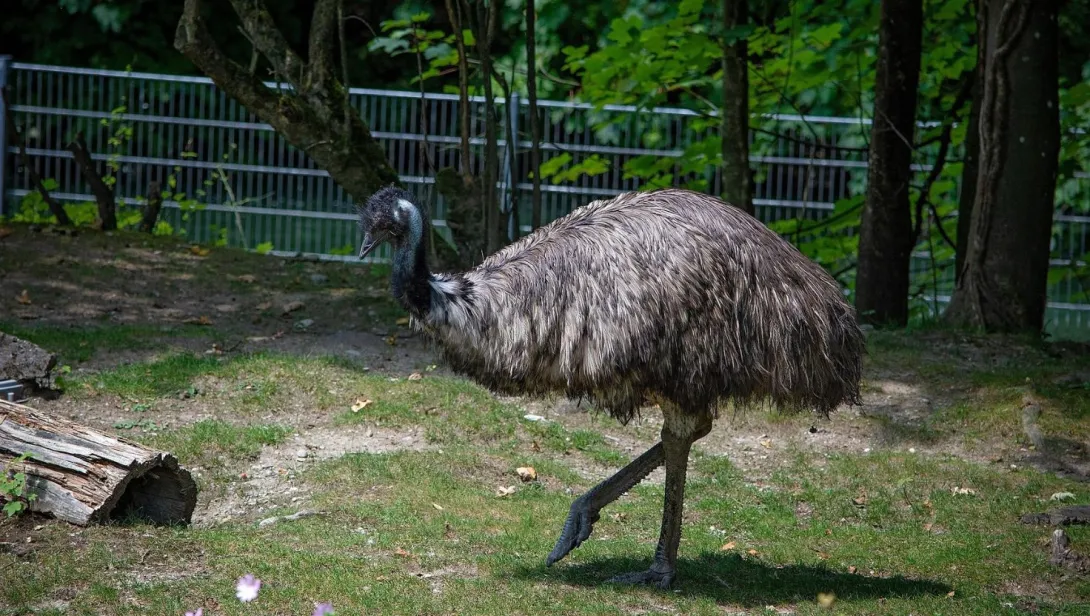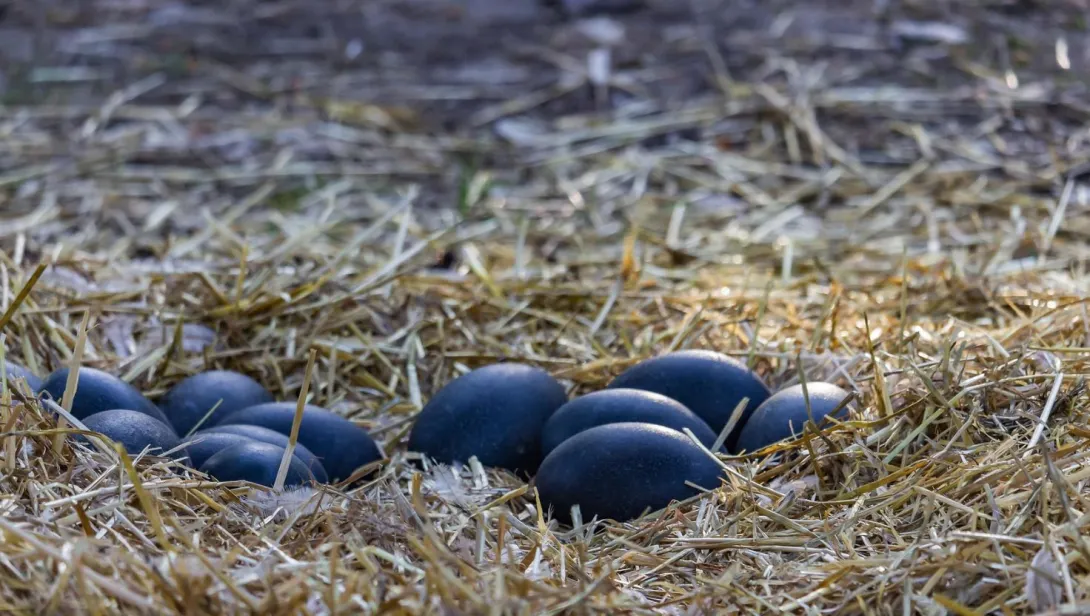Skip to main content
Introduction
- The Emu (Dromaius novaehollandiae) is the second-largest living bird after the ostrich and is native to Australia.
- They are flightless birds known for their speed, adaptability, and curious nature.
- Emus belong to the ratite group, which includes other flightless birds like ostriches and kiwis.
Physical Characteristics
- Emus stand 5 to 6.2 feet (1.5 to 1.9 meters) tall and weigh between 66 to 121 pounds (30 to 55 kg).
- They have long, powerful legs adapted for running, with three-toed feet equipped with sharp claws.
- Their wings are small (about 8 inches long) and hidden under soft, shaggy feathers.
- Emus have dark brown to gray-brown feathers with lighter patches on the neck and head.
Habitat and Distribution
- Emus are found throughout mainland Australia, inhabiting savannas, forests, and grasslands.
- They avoid dense rainforests and arid deserts but thrive in most other Australian environments.
- Emus are nomadic, traveling long distances in search of food and water.
Diet and Foraging
- Emus are omnivorous, eating plants, seeds, fruits, insects, and small animals.
- They swallow small stones (gastroliths) to help grind food in their gizzard.
- Emus can go weeks without food and survive on minimal water by extracting moisture from plants.
- They are opportunistic feeders, adapting their diet to seasonal changes.
Behavior and Communication
- Emus are generally solitary but may form small groups during migrations or at food sources.
- They communicate through deep booming calls, grunts, and drumming sounds produced in their throat sacs.
- Emus are excellent swimmers and can cross rivers when necessary.
- They are curious and intelligent, often investigating human activities.
Reproduction and Lifespan
- Female emus lay 5 to 15 dark green eggs in a ground nest, but males incubate the eggs for about 56 days.
- Male emus do not eat or drink during incubation, surviving on stored body fat.
- Emu chicks are striped with cream and brown for camouflage and can run within 24 hours of hatching.
- Emus live 10 to 20 years in the wild and up to 35 years in captivity.
Unique Adaptations
- Emus can run at speeds of 30 mph (48 km/h) and maintain 25 mph (40 km/h) for long distances.
- Their legs lack feathers, allowing heat to dissipate in hot climates.
- Emus have double-plumed feathers that provide insulation against both heat and cold.
- They can detect distant rain (up to 30 miles away) and will travel toward it.
Cultural and Economic Importance
- Emus appear on the Australian coat of arms alongside the kangaroo.
- They are farmed for meat (low in fat), oil (used in cosmetics), and leather.
- Emu oil is rich in omega fatty acids and used in skincare and medicinal products.
Conservation Status
- Emus are classified as Least Concern by the IUCN, with stable populations across Australia.
- They are protected under Australian law, though controlled culling occurs in agricultural areas.
Fun Facts
- Emus cannot walk backward, inspiring the design of the Australian 50-cent coin.
- They perform a "emo dance"—swaying and spinning—when excited or during courtship.
- Emus have two sets of eyelids: one for blinking, one for keeping dust out.
- During the 1932 "Emu War," Australian soldiers lost a battle against emus damaging crops.
- Their eggs are dark green and weigh about 1.5 pounds (700 grams) each.

